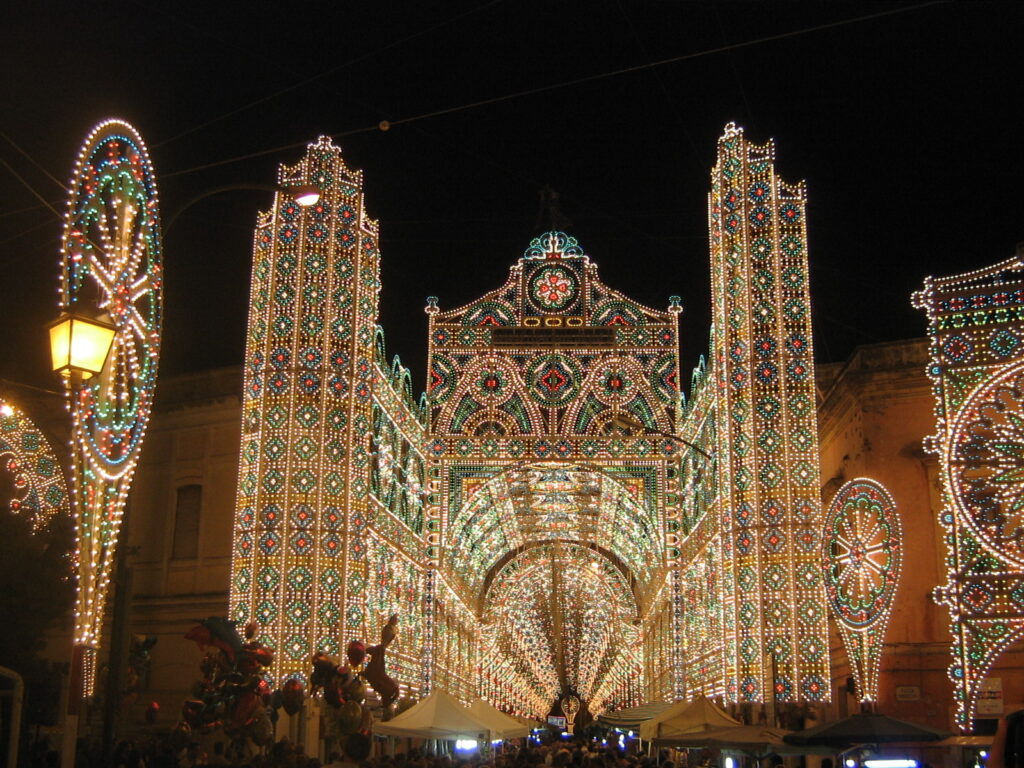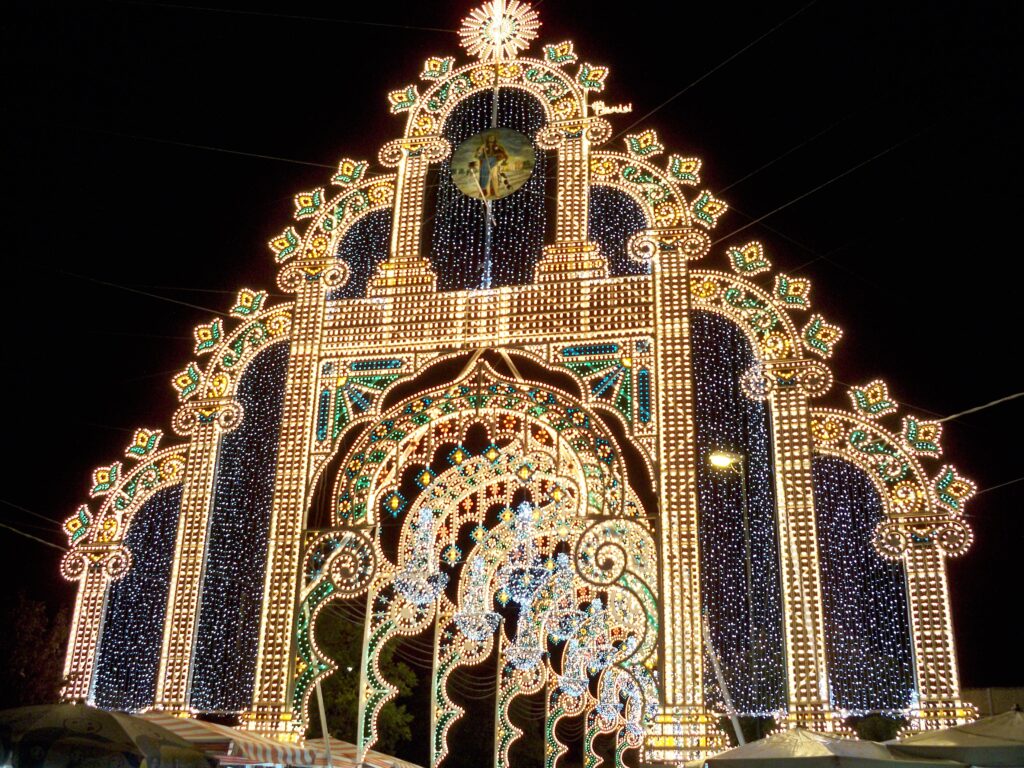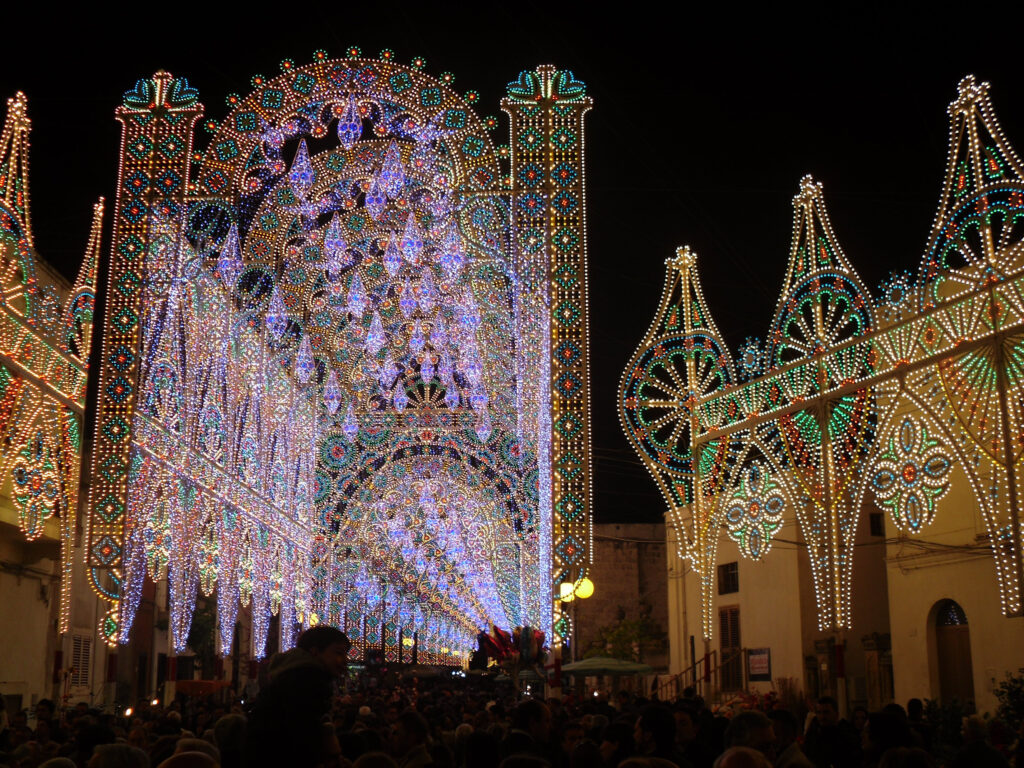Cover photo: illuminations at the patronal feast of Saints Filippo and Giacomo in Diso (Puglia) – Ph. ©Florixc
Luminary associations from Puglia, Campania, Sicily, Calabria, Basilicata, and Molise have nominated the luminaries of Southern Italy as UNESCO Intangible Cultural Heritage. The reporting process at the Paris-based United Nations Educational, Scientific and Cultural Organization (UNESCO) is advancing smoothly. A press release on April 3 confirmed the successful completion of the initial phase.
Luminaries: a centuries-old tradition
Often associated with moments of conviviality and seen as forerunners of modern light festivals, Southern Italy’s luminaries showcase the region’s artisanal skills. These wooden structures create colourful light displays that vibrate even the smallest towns during special events like village fairs or patronal festivals. Handcrafted for centuries in specialized workshops, these unique works of art combine traditional woodwork and assembly with modern electronic technology, as highlighted by the Promoting Committee during the nomination process. The luminaries have also gained international acclaim, becoming ambassadors of brands in fashion, style, and entertainment.

History and tradition behind the luminaries
The origins of the “festoon” trace back to the Middle Ages: during religious celebrations, torchlight processions took place, and the squares and alleys around the churches were decorated with candles. By the 16th century, more complex decorations emerged, with ropes holding lanterns illuminating towns at night. Modern luminaries are wooden and metal structures inspired by nature or Baroque architecture. Handcrafted and often towering up to 40 meters, they are used dramatically to redefine cathedral facades, create light tunnels, or construct ephemeral structures for celebrations.
Blending tradition and modernity: luminaries today
Traditionally made with carved wooden frames supporting incandescent bulbs, Southern Italy’s luminaries have evolved to meet modern demands for energy efficiency and reduced light pollution. The most significant change has been the switch to energy-saving LED lights, which are more efficient, durable, and cool to the touch. Timed lighting schedules also help avoid waste. Thus, luminaries represent the perfect blend of history and modernity. Although the journey to becoming a UNESCO Intangible Cultural Heritage might be long, their recognition seems inevitable.

Salerno, Tropea, Scorrano, Larino, and Naples: Southern Italy’s most beautiful
Luminaries Among the most famous are Salerno’s luminaries, Luci d’Artista, an annual event that illuminates the city from 24 November to 21 January. Since 2006, this festival has transformed Salerno into an open-air museum featuring Corso Vittorio Emanuele and Piazza Flavio Gioia. Puglia’s luminaries are renowned for their craftsmanship, with Scorrano considered the world’s capital of luminaries. Tropea’s luminaries are known for their beauty, especially during Christmas, when the historic town glows with lights, enhancing its ancient charm.
In Naples, luminaries decorate the streets during festivities, particularly at Christmas. Via San Gregorio Armeno, famous for its nativity scenes, is spectacularly lit up during the holidays. In Larino, luminaries captivate visitors, especially during patronal festivals.
